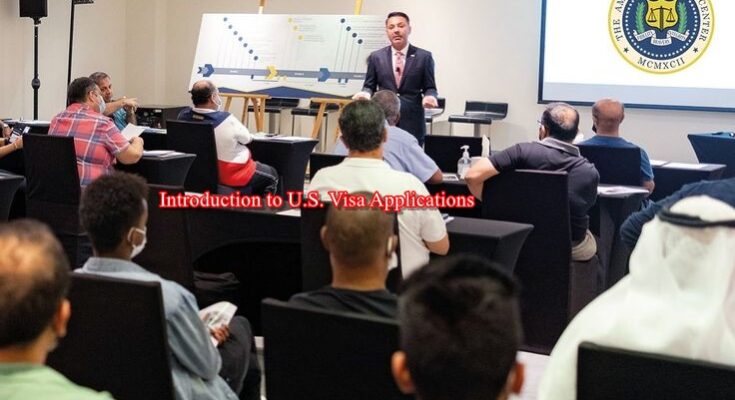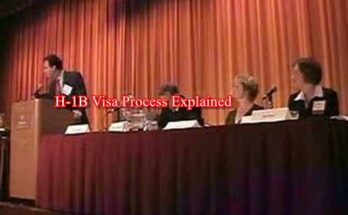Introduction to U.S. Visa Applications Applying for a U.S. visa can be a daunting task, especially if you are unfamiliar with the process. Whether you are seeking to visit the United States for tourism, study, or work, understanding the intricacies of the visa application process is crucial. This guide aims to demystify the U.S. visa application process, providing a clear, step-by-step explanation for beginners. We will cover the types of U.S. visas, the application procedures, and offer tips to help you navigate the process successfully.
Types of U.S. Visas
The U.S. offers a variety of visas, each tailored to specific purposes and categories. Understanding which visa suits your needs is the first step in the application process. Here’s a breakdown of the most common U.S. visas, Introduction to U.S. Visa Applications.
Nonimmigrant Visas Nonimmigrant visas are for individuals who plan to stay in the U.S. temporarily. The main categories include, Introduction to U.S. Visa Applications.
B-1/B-2 Visitor Visas: For individuals visiting the U.S. for business (B-1) or pleasure (B-2). The B-1 visa is used for short-term business activities like meetings and conferences, while the B-2 visa is for tourism, visiting friends, or medical treatment.
F-1 Student Visa: For individuals enrolled in an academic program or language course at a U.S. institution. The F-1 visa allows students to remain in the U.S. for the duration of their studies and is often accompanied by options for practical training (OPT/CPT).
J-1 Exchange Visitor Visa: For individuals participating in exchange programs, including students, scholars, and professionals. The J-1 visa supports cultural and educational exchange and often includes programs like internships or research opportunities.
H-1B Work Visa: For individuals employed in specialty occupations requiring a bachelor’s degree or higher. This visa is typically sponsored by an employer and allows for a stay of up to three years, extendable to six years.
L-1 Intracompany Transferee Visa: For employees of international companies being transferred to a U.S. branch, subsidiary, or affiliate. The L-1 visa is for managers, executives, or individuals with specialized knowledge.
Immigrant Visas Immigrant visas are for individuals seeking to live permanently in the U.S. They include:
Introduction to U.S. Visa Applications
Family-Based Immigrant Visas: For individuals seeking to join family members who are U.S. citizens or lawful permanent residents. This category includes visas for spouses, children, siblings, and parents of U.S. citizens.
Employment-Based Immigrant Visas: For individuals seeking to live in the U.S. based on employment. This category includes various preference levels based on job skills, education, and experience.
Diversity Visa Lottery: A program that provides visas to individuals from countries with low immigration rates to the U.S. Winners are selected randomly through a lottery system.
Steps in the U.S. Visa Application Process
The visa application process involves several key steps. Here’s a detailed overview to guide you through each stage:
Determine the Appropriate Visa Category Before applying, identify the visa category that aligns with your purpose for traveling to the U.S. Review the different types of visas and select the one that best fits your needs.
Complete the DS-160 Form
Form DS-160: This is the online nonimmigrant visa application form. It must be completed by all nonimmigrant visa applicants. You can access the DS-160 form on the Consular Electronic Application Center (CEAC) website.
Filling Out the Form: The DS-160 requires detailed personal information, travel history, and background details. Be honest and accurate when providing information. Ensure you have a valid passport, travel itinerary, and other relevant documents before starting the form.
Submission: After completing the DS-160, submit the form electronically. You will receive a confirmation page with a barcode. Print this page and keep it for your records, as you will need it for your visa interview.
Pay the Visa Application Fee
Fee Amount: The visa application fee varies depending on the type of visa you are applying for. For most nonimmigrant visas, the fee is $160, but this can differ for specific categories or based on reciprocity agreements with certain countries.
Introduction to U.S. Visa Applications
Payment Methods: Fees can typically be paid online, at a bank, or through other approved methods, depending on your local U.S. embassy or consulate’s requirements. Be sure to keep the receipt as proof of payment.
Schedule a Visa Interview
Booking the Interview: Visa interviews are usually required for nonimmigrant visas. Schedule your interview at the nearest U.S. embassy or consulate. You can typically book an appointment online through the embassy’s website or the Visa Information and Appointment Services (VIAS) system.
Interview Wait Times: Wait times for interviews can vary based on location and demand. Check the embassy or consulate’s website for current wait times and plan accordingly.
Prepare for the Visa Interview
Gather Required Documents: The documents required for your visa interview will depend on the visa category. Common documents include ,Introduction to U.S. Visa Applications.
A valid passport with at least six months of validity beyond your intended stay.
The DS-160 confirmation page with barcode.
Visa application fee receipt.
A recent passport-sized photograph meeting U.S. visa photo requirements.
Supporting documents relevant to your visa category (e.g., employment letter, school enrollment confirmation, financial statements).
Interview Preparation: Be ready to answer questions about your travel plans, background, and purpose of visit. It’s important to be clear, honest, and concise in your responses.
Attend the Visa Interview
Interview Process: Arrive at the U.S. embassy or consulate on time for your interview. You will be asked about your visa application, travel plans, and background. Consular officers may also request additional documents or information.
Fingerprinting: You may be required to provide biometric information, such as fingerprints, as part of the visa application process.
Wait for Visa Processing
Processing Time: After the interview, your visa application will be processed. Processing times can vary depending on the visa category, individual circumstances, and the workload of the embassy or consulate.
Tracking Status: Some embassies or consulates provide options to track the status of your visa application online.
Receive Your Visa
Visa Issuance: If your visa is approved, you will be notified when your passport and visa are ready for pickup or delivery. The visa will be affixed to a page in your passport.
Review the Visa: Check the visa to ensure all information is correct. Verify the validity dates, visa type, and any conditions or restrictions.
Travel to the U.S.
Entry into the U.S.: Upon arriving in the U.S., present your passport with the visa to the U.S. Customs and Border Protection (CBP) officer at the port of entry. The officer will review your documents and determine your eligibility for entry.
Tips for a Successful U.S. Visa Application
Start Early: Begin your visa application process well in advance of your planned travel date. Visa processing can take several weeks, and starting early helps ensure you have ample time for any unforeseen delays.
Be Accurate and Honest: Provide accurate and truthful information throughout the application process. Any discrepancies or false information can lead to delays or denials.
Prepare Thoroughly: Gather all required documents and ensure they are complete and up-to-date. Incomplete or incorrect documentation can result in delays or denials.
Introduction to U.S. Visa Applications
Understand the Requirements: Familiarize yourself with the specific requirements for your visa category. Different visas have different requirements, so understanding these will help you prepare more effectively.
Follow Instructions: Adhere to the instructions provided by the U.S. embassy or consulate. This includes guidelines for completing forms, scheduling interviews, and submitting documents.
Be Professional: During your visa interview, present yourself professionally and respectfully. Answer questions clearly and confidently, and be prepared to provide additional information if requested.
Keep Records: Maintain copies of all documents related to your visa application, including forms, receipts, and correspondence. This will help you track your application and address any issues that may arise.
Conclusion
Navigating the U.S. visa application process can be complex, but understanding the steps and requirements can make the journey smoother. By selecting the appropriate visa category, completing the necessary forms, and preparing thoroughly for your interview, you can increase your chances of a successful application. Remember to start early, be accurate and honest, and follow all instructions carefully.
Whether you are traveling to the U.S. for business, study, or pleasure, being well-informed and prepared is key to a successful visa application. With this comprehensive guide, you are equipped with the knowledge needed to approach the U.S. visa application process with confidence.
If you have any specific questions or need further assistance with your visa application, don’t hesitate to seek advice from a qualified immigration professional or contact the U.S. embassy or consulate handling your case.




